Treasures of Heaven: saints, relics and devotion in medieval Europe
This major exhibition in the British Museum brings together for the first time some of the finest sacred treasures of the medieval age. It features over 150 objects drawn from more than 40 institutions including the Vatican, European church treasuries, museums from the USA and Europe and the British Museum’s own pre-eminent collection.
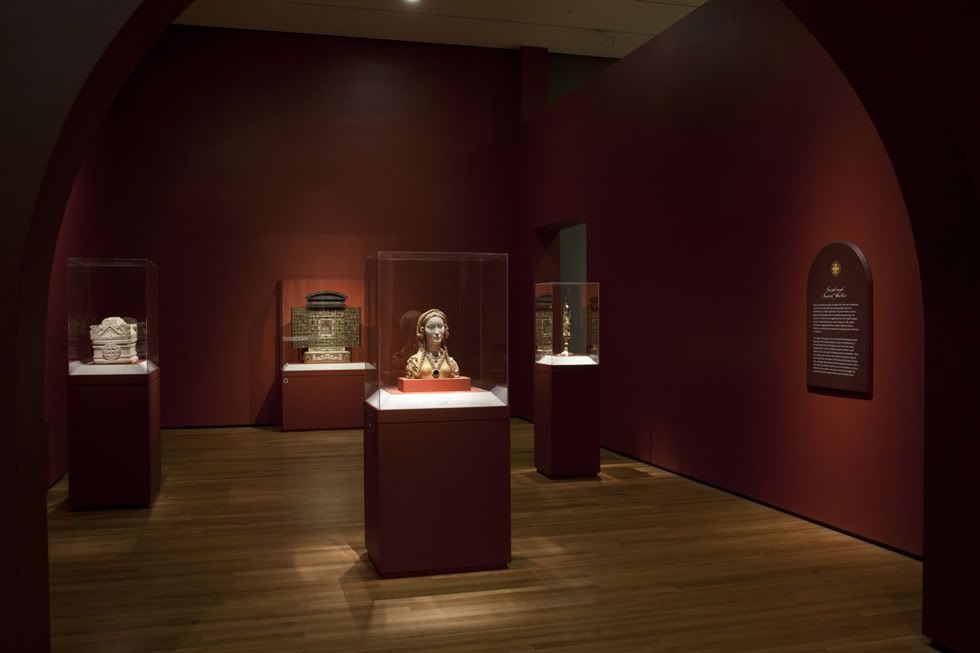
The cult of the saints, as formulated in late Antiquity and the Middle Ages, depended in large part on the production and dissemination of hagiographic texts. Such texts provided evidence that the hero or heroine had lived a virtuous life, or in the case of sinners like Mary Magdalene, that he or she had undergone a period of penance appropriate to his or her transgression.

Hagiographic texts also testified to the performance of miracles, both during and after a saint's lifetime. Such events became a decisive factor in determining who achieved sainthood, and were key to motivating the faithful to undertake pilgrimages. In fact, many collections of saints' lives were organized around the various feast days used to celebrate the saints, so that the reader would know when to pay homage to Demetrios and when to commemorate Sergios.

One of the most important collections of saints' lives is the Legenda Aurea, or Golden Legend. Compiled by the Dominician friar Jacobus de Voragine around 1260, the Golden Legend started as a guide for clerics, but became a popular text among lay readers in later centuries. Its widespread use is apparent in the large number of surviving copies and its translation into multiple vernacular languages.
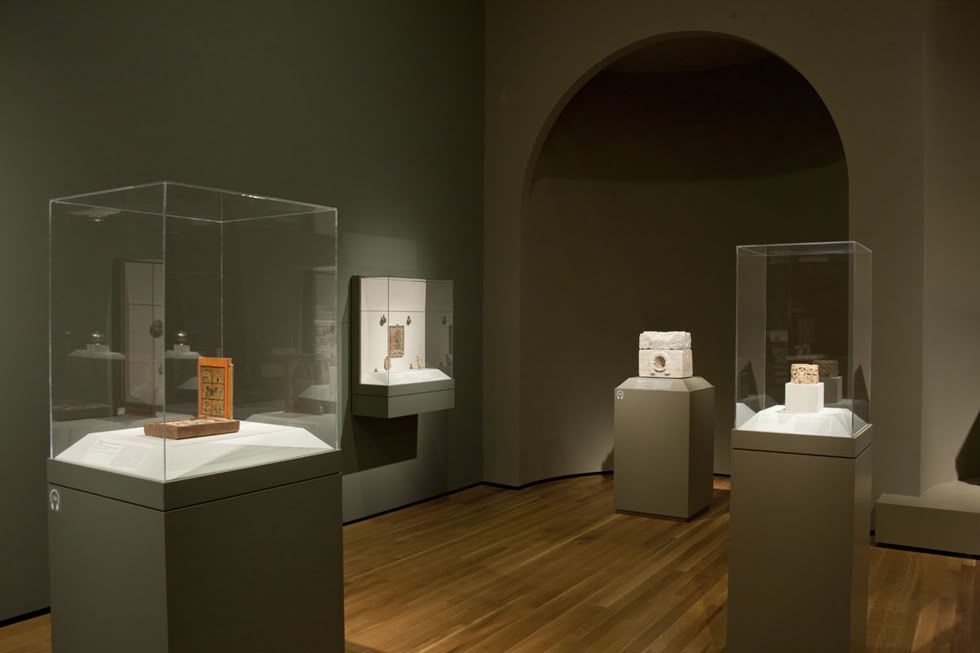
The first English translation of the Golden Legend appeared in 1483. Prepared by William of Caxton, this translation was one of the first printed books in Europe. Caxton's translation is also notable for the addition of material from a number of other sources, including the Bible, which he used to augment Voragine's text. Rather than viewing this as a deviation from the original, however, it is more productive to think of Caxton's translation as continuing in the tradition of hagiography to which Voragine belonged, with the purpose of such a text being to capture the reader's imagination.
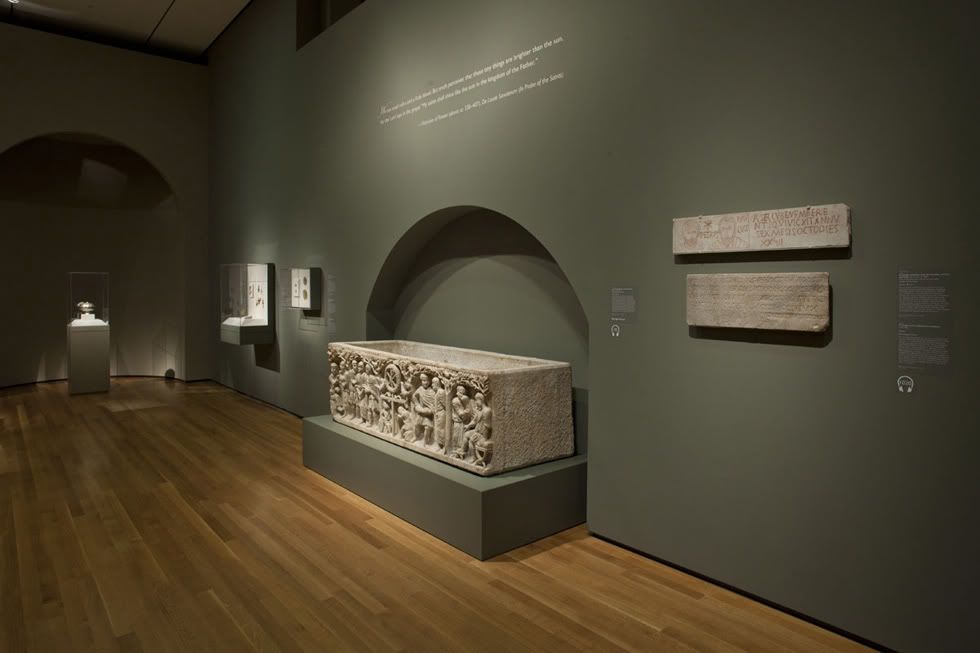
In 313 CE, Constantine the Great declared Christianity an official religion of the Roman Empire. This made it possible for Christians to build large-scale, public monuments, proclaiming their devotion to God, for the first time. It also allowed them to openly commemorate the holy men and women-collectively referred to as saints-who in life and death served as their models.

One way of commemorating the saints was to pay homage to their relics, a term that literally means "left behind." A saint's body, or a part of a saint's body, such as an arm or a finger, is a relic, but so is an object that a saint touched during his or her lifetime. Even an object brought into contact with the body of a saint after his or her death, like a piece of cloth or a vial of oil, assumes the status of a relic.
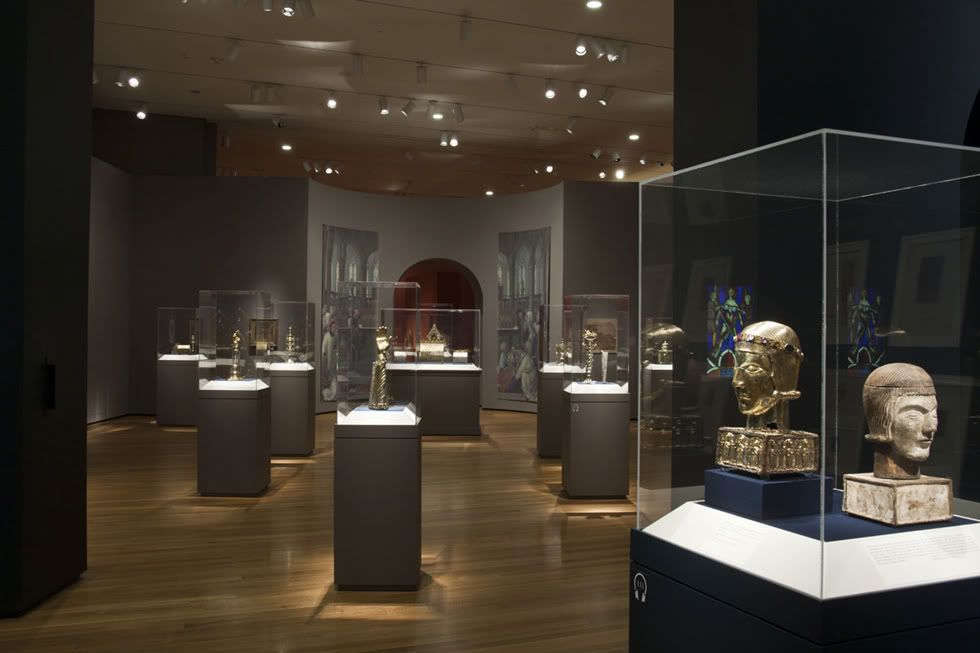
From the time of the early Christians up to and beyond the Protestant Reformation, relics played a central role in the life of the Church. Entire communities would gather around a saint's tomb, particularly on the anniversary of his or her death, hoping to catch a glimpse of his or her remains; perhaps even to receive a blessing. Believed to possess miracle-granting properties, relics served as further proof of the "special" status of the saints.
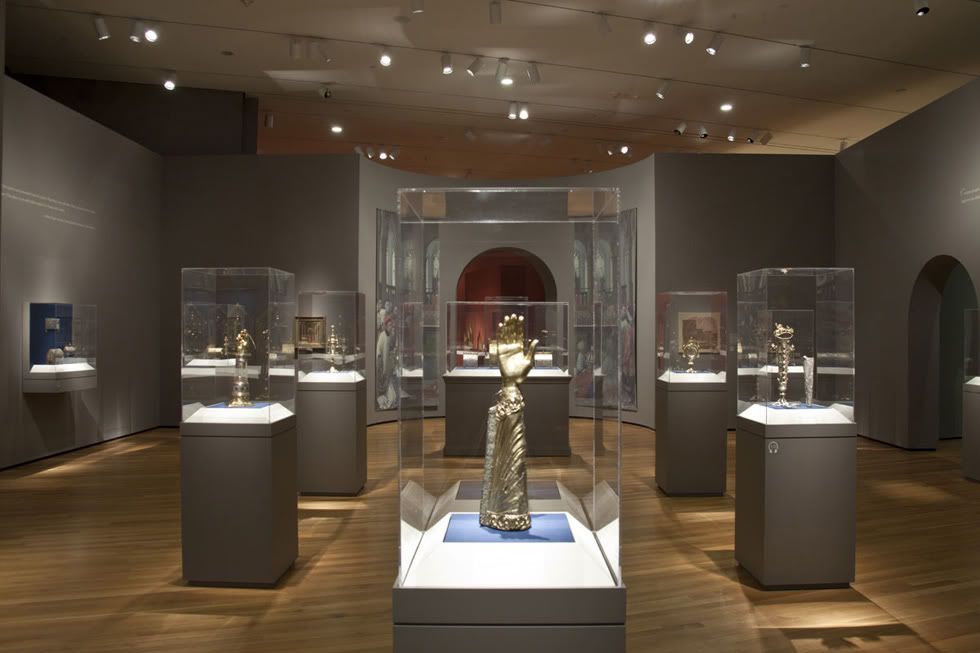
Thought to occupy a place between earth, where their bodies, like those of other Christians, awaited resurrection at the Last Judgment, and heaven, where their souls existed peacefully alongside God, the saints reputedly had the ability to intercede on behalf of humankind. Consequently, their relics became precious commodities, sought after by prelates and princes alike, who hoped that these bits of matter would protect them from harm and keep them in good health.
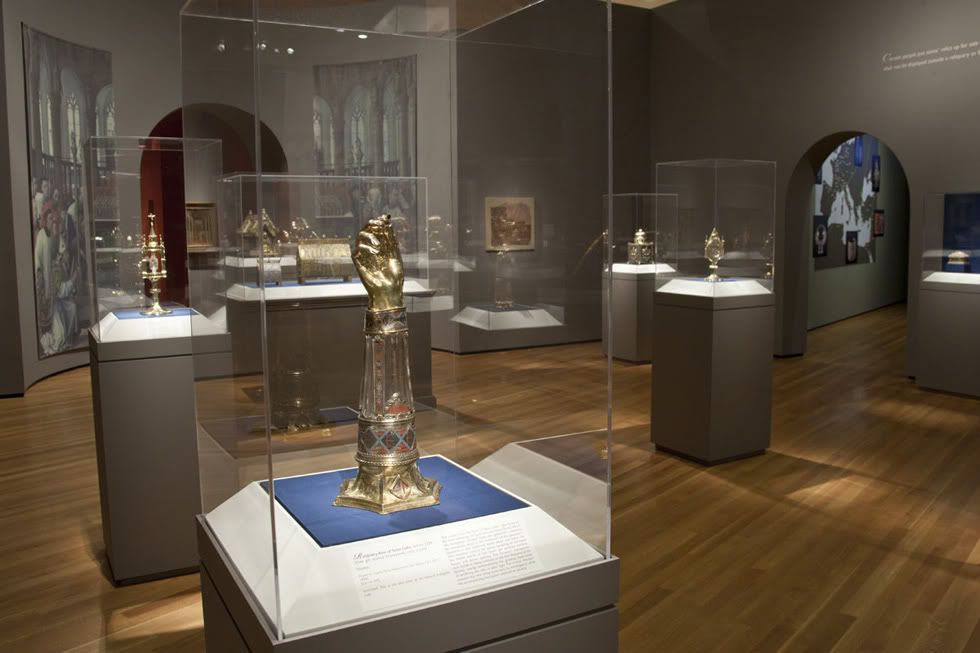
It was during the medieval period that the use of relics in devotional practice first developed and became a central part of Christian worship. For many, the relics of Christ and the saints - objects associated with them, such as body parts or possessions - continue to provide a bridge between heaven and earth today.
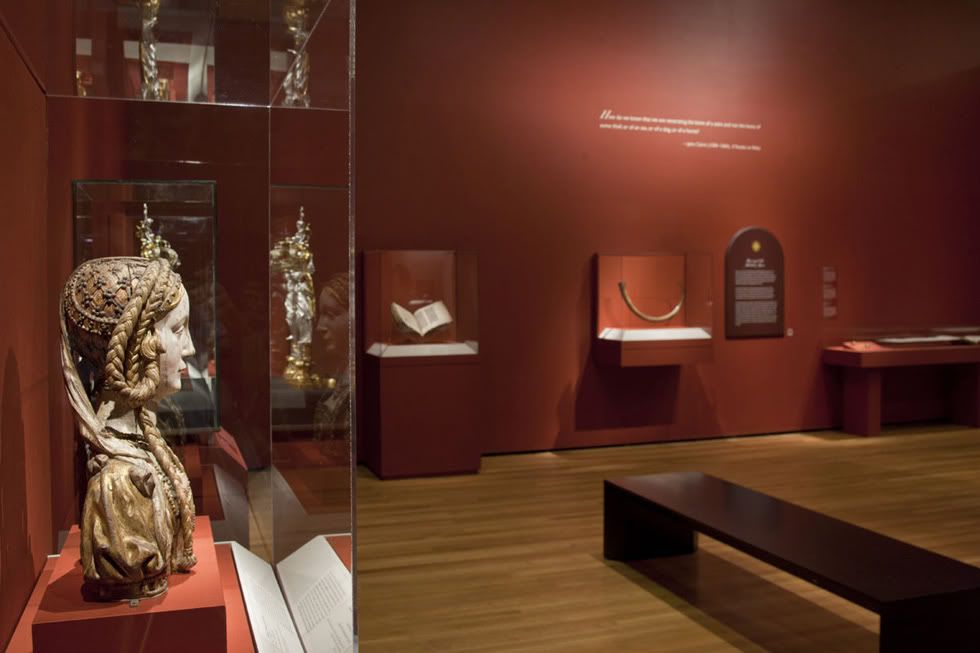
Relics were usually set into ornate containers of silver and gold known as reliquaries, opulently decorated by the finest craftsmen of the age. They had spiritual and symbolic value that reflected the importance of their sacred contents.
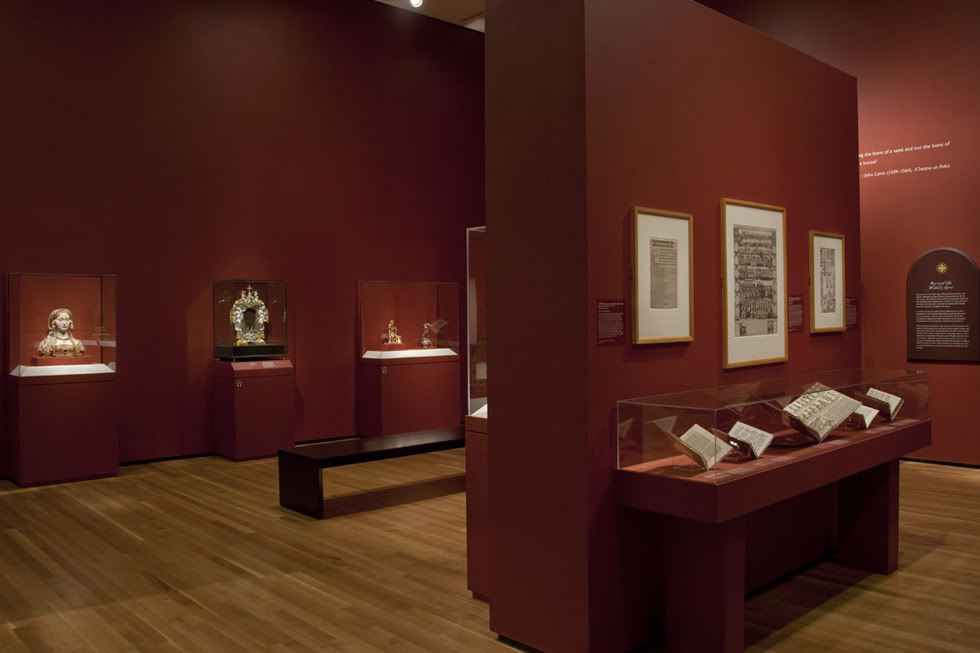
The earliest items date from the late Roman period and trace the evolution of the cult of the saints from the 4th century to the peak of relic veneration in late medieval Europe.
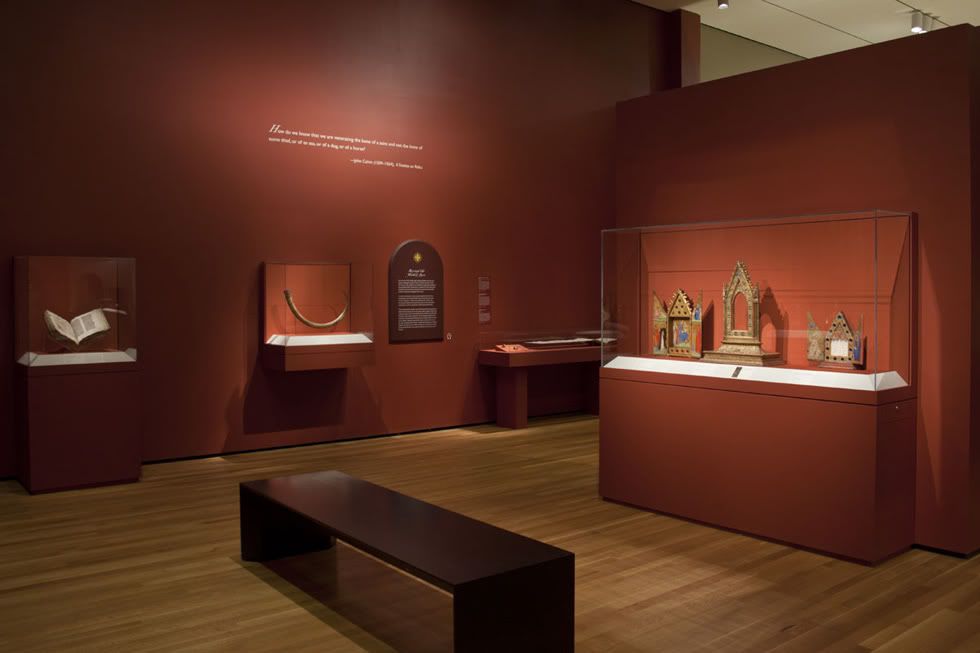
Relics featured in the exhibition include three thorns thought to be from the Crown of Thorns, fragments of the True Cross, the foot of St Blaise, the breast milk of the Virgin Mary, the hair of St John the Evangelist, and the Mandylion of Edessa (one of the earliest known likenesses of Jesus).
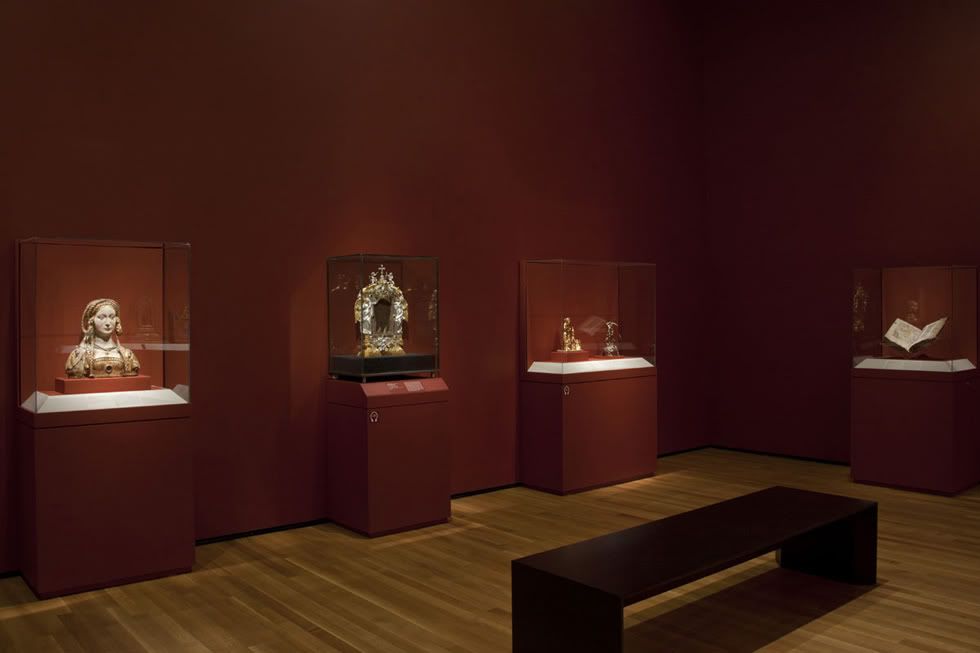
The idea that certain places in this world are holy is central to the cult of saints, either because they house the relics of holy men and women or because they contain traces of their long absent bodies. It was the desire to gain proximity to such holy places that inspired the first pilgrims to make their way to Jerusalem, where they walked in the footsteps of Christ and visited the scenes of his martyrdom.
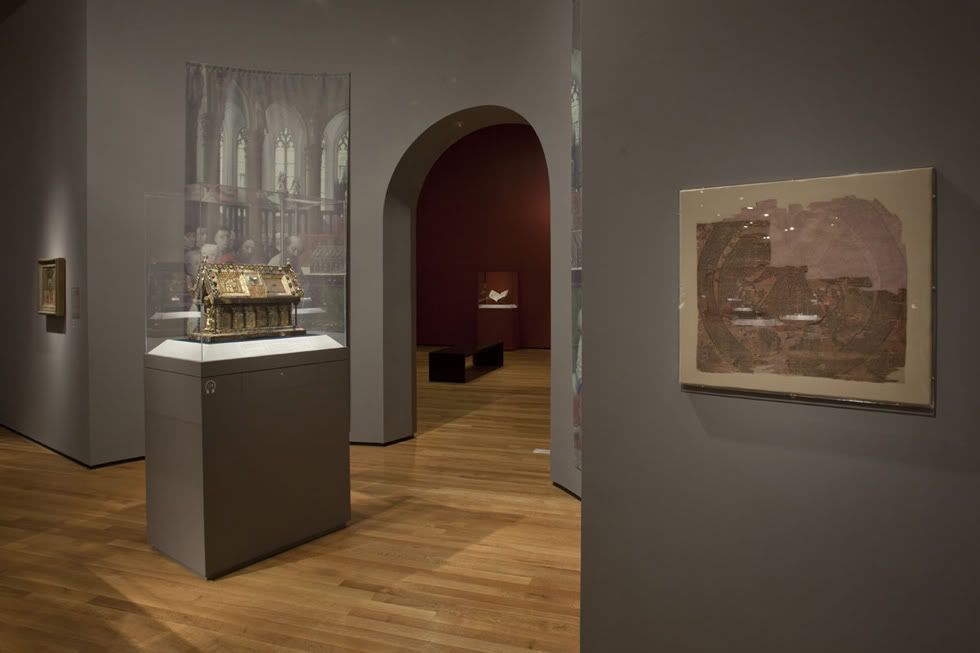
Yet, to be a pilgrim in late Antiquity or the Middle Ages meant much more than traveling to a destination considered to be a holy place. It meant undertaking a journey that was physically and spiritually taxing, since pilgrims committed to crossing great distances, often by foot, while paying penance for their sins along the way.
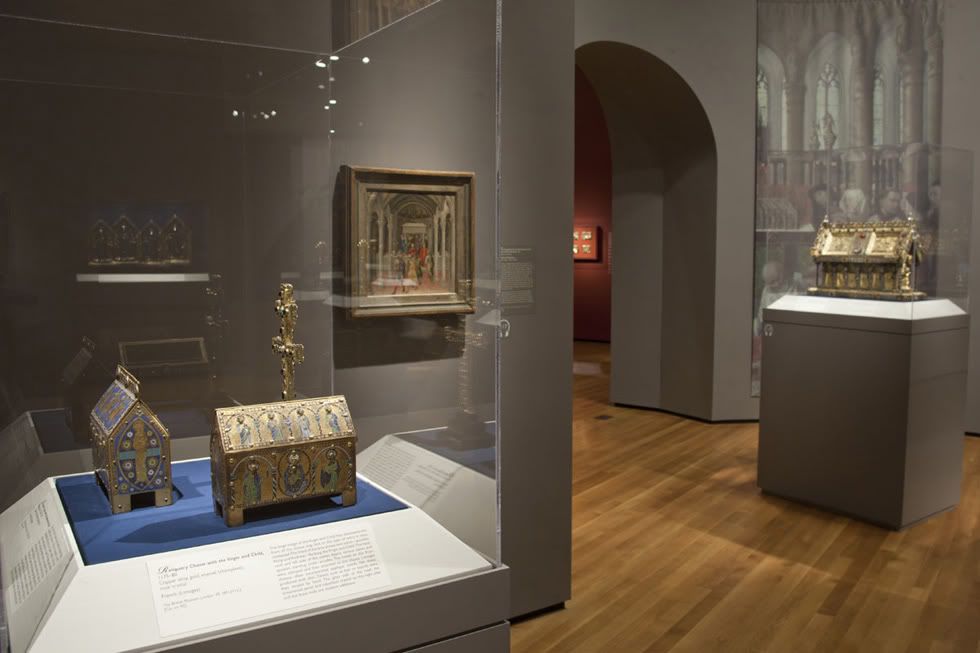
Despite the many hardships that pilgrims faced enroute, including robbery, hunger and illness, they also stood to gain a great deal. As noted by the fourth century theologian, Augustine, Bishop of Hippo, holy places, like a saint's tomb, were frequently the site of miracles. In fact, Augustine encouraged the recording of such miracles so that future pilgrims knew what to expect upon their arrival.
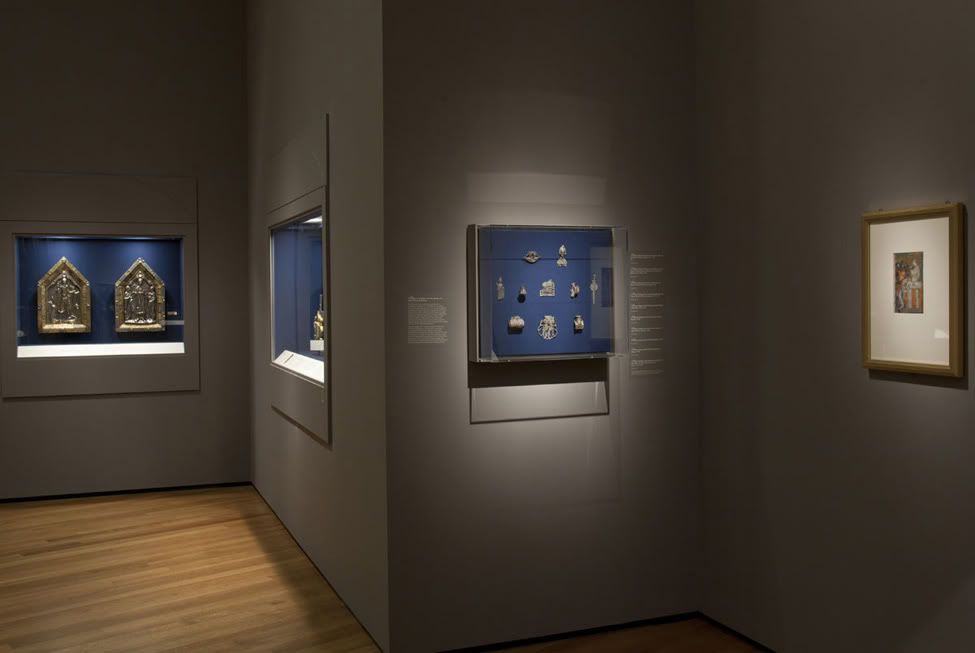
In addition to hoping for a miracle, a pilgrim might receive an indulgence for visiting a specific saint's tomb, or a place considered to be important to the life of Christ. An indulgence is a special dispensation given by the pope which partially-or in some cases entirely-absolves the penitent of his or her sins. Typically given in exchange for conducting a pilgrimage to a saint's shrine, indulgences were also sometimes granted for saying a certain number of prayers before images thought to have miracle-working properties. This led to the practice of conducting a pilgrimage in one's heart, instead of with one's body.
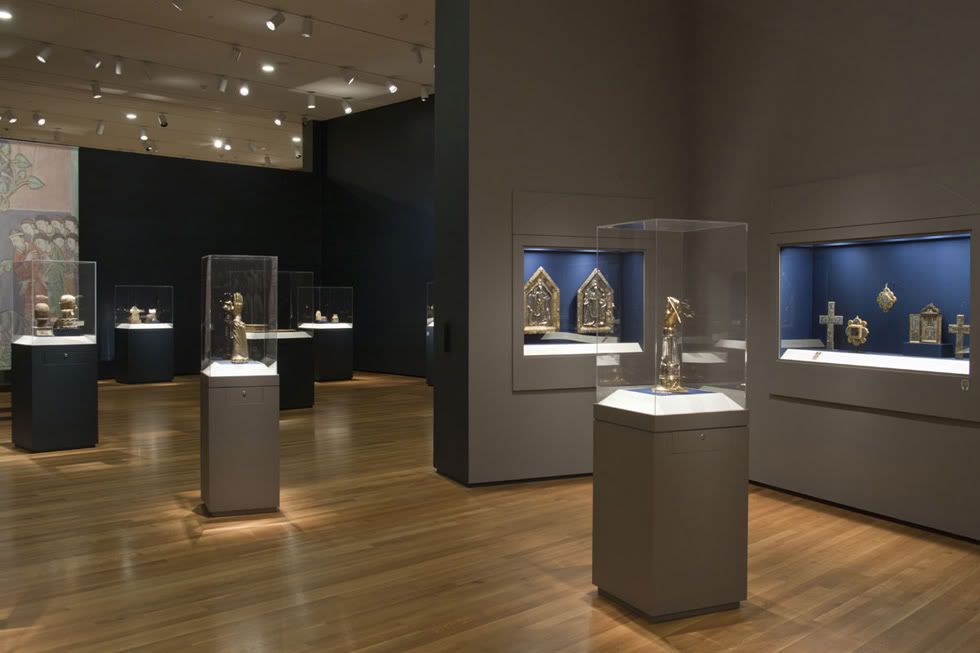
Treasures of Heaven: Saints, Relics, and Devotion in Medieval Europe was organized by the Cleveland Museum of Art, the Walters Art Museum, Baltimore, and the British Museum, London. This exhibition is supported by an indemnity from the Federal Council on the Arts and Humanities. Support for the exhibition has been provided by the National Endowment for the Humanities and the Samuel H. Kress Foundation.
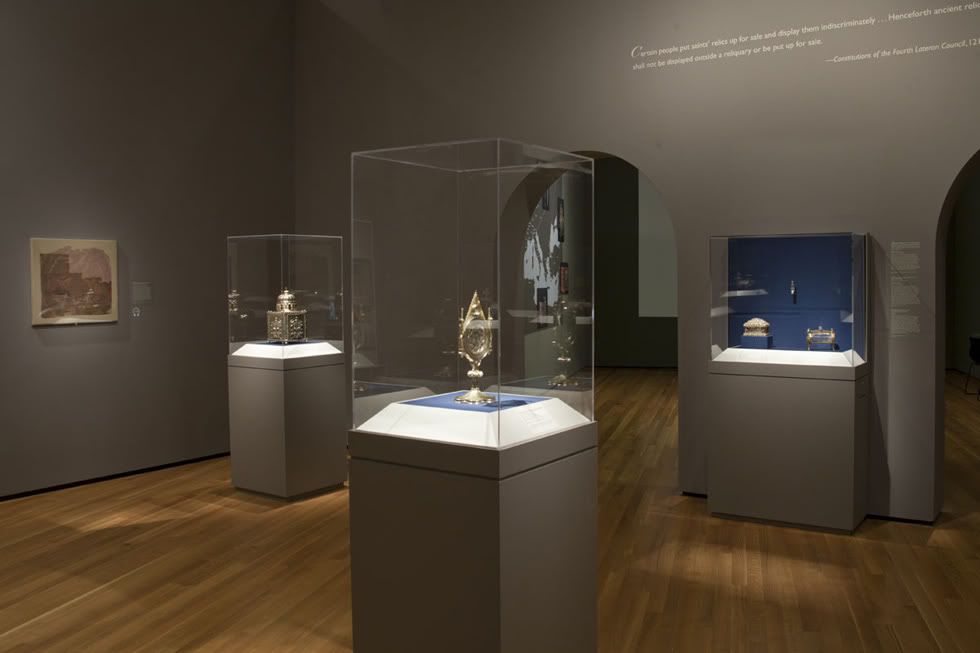
Treasures of Heaven is co-curated by Martina Bagnoli, Holger A. Klein, C. Griffith Mann, and James Robinson.
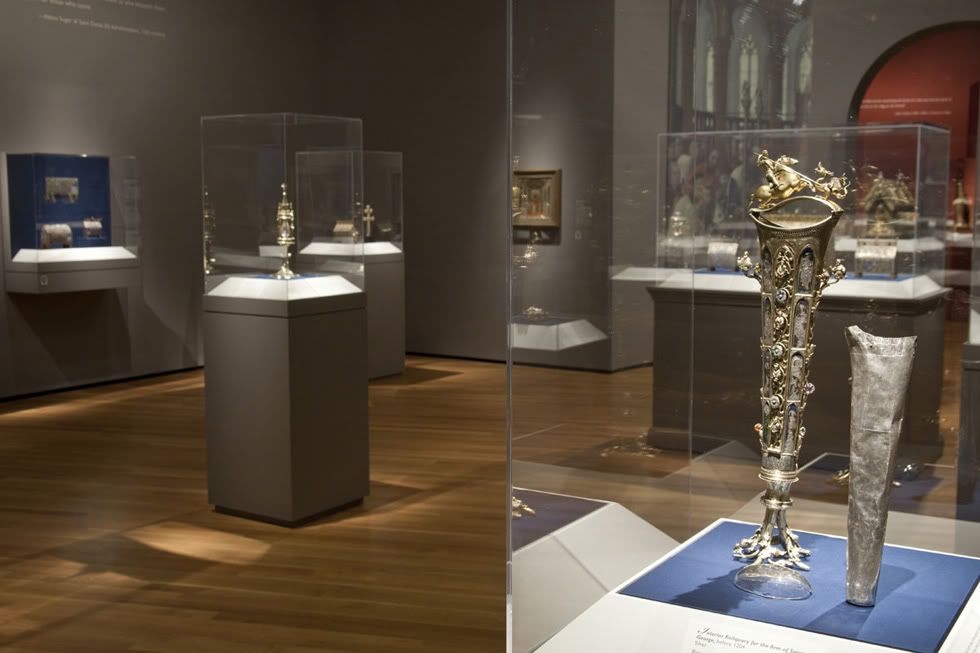
Exhibition dates:
The Cleveland Museum of Art
October 17, 2010-January 17, 2011
The Walters Art Museum, Baltimore
February 13, 2011-May 15, 2011
The British Museum, London
June 23, 2011-October 9, 2011
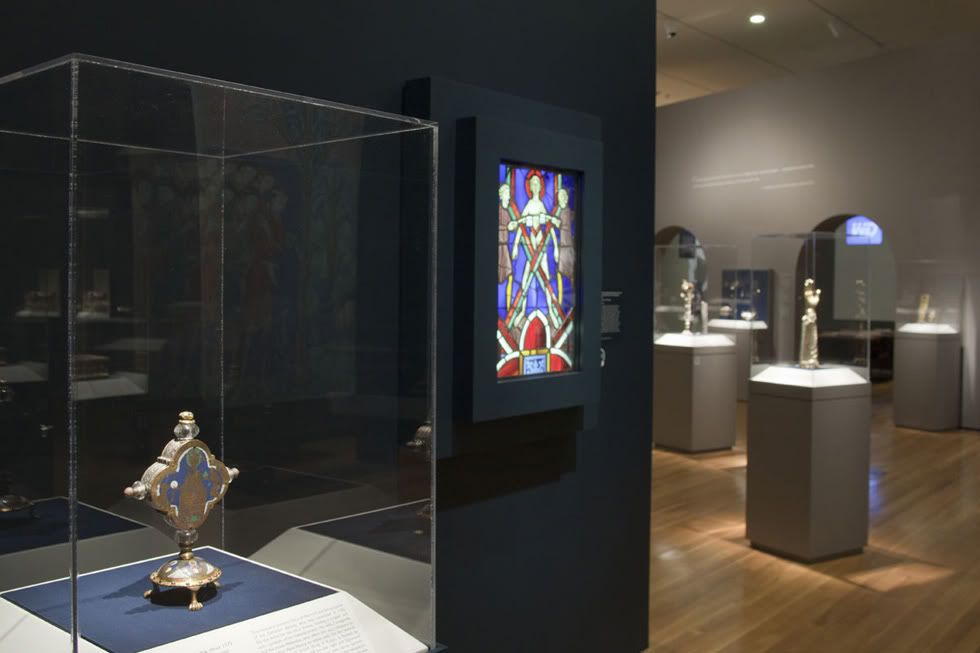
Treasures such as these have not been seen in significant numbers in the UK since the Reformation in the 16th century, which saw the wholesale destruction of saints’ shrines. The exhibition offers a rare opportunity to glimpse the heritage of beautiful medieval craftsmanship that was lost to this country for centuries.
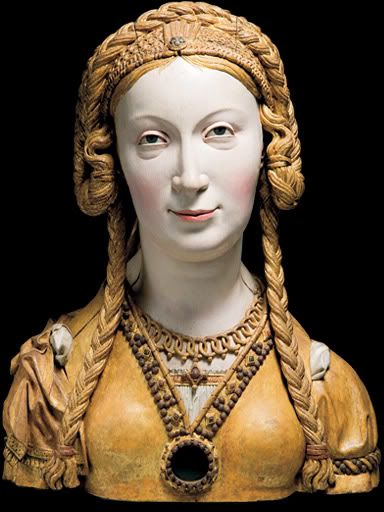
Reliquary bust of an unknown female saint, probably a companion of St Ursula. South Netherlandish, c. 1520-1530.
© The Metropolitan Museum of Art, New York.
© Блог научного коллектива Музея имени Андрея Рублева. Эксперты приводят в пример воцерковлённое сообщество - сообщество Музея древнерусской культуры и искусства имени Андрея Рублёва: http://rublev-museum.livejournal.com/392705.html

Tags: Русская Православная Церковь, досье, расследование, фальсификация истории
Метки: #Музей, #МузейАндреяРублева, #МузейРублева, #МузейноеЕдинство, #Православие, #Рублев, #Рублева, #монастырь, #музей_имени_Рублева, #протест, andrei rublev, Андрей Рублев, Андроников монастырь, Музей имени Андрея Рублева, СМИ о ЦМиАР, лекторий
#МузейРублева #МузейАндреяРублева #музей_имени_Рублева #МузейноеЕдинство #rublevmuseum #andreyrublevmuseum
@ Музей Андрея Рублева

The cult of the saints, as formulated in late Antiquity and the Middle Ages, depended in large part on the production and dissemination of hagiographic texts. Such texts provided evidence that the hero or heroine had lived a virtuous life, or in the case of sinners like Mary Magdalene, that he or she had undergone a period of penance appropriate to his or her transgression.

Hagiographic texts also testified to the performance of miracles, both during and after a saint's lifetime. Such events became a decisive factor in determining who achieved sainthood, and were key to motivating the faithful to undertake pilgrimages. In fact, many collections of saints' lives were organized around the various feast days used to celebrate the saints, so that the reader would know when to pay homage to Demetrios and when to commemorate Sergios.

One of the most important collections of saints' lives is the Legenda Aurea, or Golden Legend. Compiled by the Dominician friar Jacobus de Voragine around 1260, the Golden Legend started as a guide for clerics, but became a popular text among lay readers in later centuries. Its widespread use is apparent in the large number of surviving copies and its translation into multiple vernacular languages.

The first English translation of the Golden Legend appeared in 1483. Prepared by William of Caxton, this translation was one of the first printed books in Europe. Caxton's translation is also notable for the addition of material from a number of other sources, including the Bible, which he used to augment Voragine's text. Rather than viewing this as a deviation from the original, however, it is more productive to think of Caxton's translation as continuing in the tradition of hagiography to which Voragine belonged, with the purpose of such a text being to capture the reader's imagination.

In 313 CE, Constantine the Great declared Christianity an official religion of the Roman Empire. This made it possible for Christians to build large-scale, public monuments, proclaiming their devotion to God, for the first time. It also allowed them to openly commemorate the holy men and women-collectively referred to as saints-who in life and death served as their models.

One way of commemorating the saints was to pay homage to their relics, a term that literally means "left behind." A saint's body, or a part of a saint's body, such as an arm or a finger, is a relic, but so is an object that a saint touched during his or her lifetime. Even an object brought into contact with the body of a saint after his or her death, like a piece of cloth or a vial of oil, assumes the status of a relic.

From the time of the early Christians up to and beyond the Protestant Reformation, relics played a central role in the life of the Church. Entire communities would gather around a saint's tomb, particularly on the anniversary of his or her death, hoping to catch a glimpse of his or her remains; perhaps even to receive a blessing. Believed to possess miracle-granting properties, relics served as further proof of the "special" status of the saints.

Thought to occupy a place between earth, where their bodies, like those of other Christians, awaited resurrection at the Last Judgment, and heaven, where their souls existed peacefully alongside God, the saints reputedly had the ability to intercede on behalf of humankind. Consequently, their relics became precious commodities, sought after by prelates and princes alike, who hoped that these bits of matter would protect them from harm and keep them in good health.

It was during the medieval period that the use of relics in devotional practice first developed and became a central part of Christian worship. For many, the relics of Christ and the saints - objects associated with them, such as body parts or possessions - continue to provide a bridge between heaven and earth today.

Relics were usually set into ornate containers of silver and gold known as reliquaries, opulently decorated by the finest craftsmen of the age. They had spiritual and symbolic value that reflected the importance of their sacred contents.

The earliest items date from the late Roman period and trace the evolution of the cult of the saints from the 4th century to the peak of relic veneration in late medieval Europe.

Relics featured in the exhibition include three thorns thought to be from the Crown of Thorns, fragments of the True Cross, the foot of St Blaise, the breast milk of the Virgin Mary, the hair of St John the Evangelist, and the Mandylion of Edessa (one of the earliest known likenesses of Jesus).

The idea that certain places in this world are holy is central to the cult of saints, either because they house the relics of holy men and women or because they contain traces of their long absent bodies. It was the desire to gain proximity to such holy places that inspired the first pilgrims to make their way to Jerusalem, where they walked in the footsteps of Christ and visited the scenes of his martyrdom.

Yet, to be a pilgrim in late Antiquity or the Middle Ages meant much more than traveling to a destination considered to be a holy place. It meant undertaking a journey that was physically and spiritually taxing, since pilgrims committed to crossing great distances, often by foot, while paying penance for their sins along the way.

Despite the many hardships that pilgrims faced enroute, including robbery, hunger and illness, they also stood to gain a great deal. As noted by the fourth century theologian, Augustine, Bishop of Hippo, holy places, like a saint's tomb, were frequently the site of miracles. In fact, Augustine encouraged the recording of such miracles so that future pilgrims knew what to expect upon their arrival.

In addition to hoping for a miracle, a pilgrim might receive an indulgence for visiting a specific saint's tomb, or a place considered to be important to the life of Christ. An indulgence is a special dispensation given by the pope which partially-or in some cases entirely-absolves the penitent of his or her sins. Typically given in exchange for conducting a pilgrimage to a saint's shrine, indulgences were also sometimes granted for saying a certain number of prayers before images thought to have miracle-working properties. This led to the practice of conducting a pilgrimage in one's heart, instead of with one's body.

Treasures of Heaven: Saints, Relics, and Devotion in Medieval Europe was organized by the Cleveland Museum of Art, the Walters Art Museum, Baltimore, and the British Museum, London. This exhibition is supported by an indemnity from the Federal Council on the Arts and Humanities. Support for the exhibition has been provided by the National Endowment for the Humanities and the Samuel H. Kress Foundation.

Treasures of Heaven is co-curated by Martina Bagnoli, Holger A. Klein, C. Griffith Mann, and James Robinson.

Exhibition dates:
The Cleveland Museum of Art
October 17, 2010-January 17, 2011
The Walters Art Museum, Baltimore
February 13, 2011-May 15, 2011
The British Museum, London
June 23, 2011-October 9, 2011

Treasures such as these have not been seen in significant numbers in the UK since the Reformation in the 16th century, which saw the wholesale destruction of saints’ shrines. The exhibition offers a rare opportunity to glimpse the heritage of beautiful medieval craftsmanship that was lost to this country for centuries.

Reliquary bust of an unknown female saint, probably a companion of St Ursula. South Netherlandish, c. 1520-1530.
© The Metropolitan Museum of Art, New York.
© Блог научного коллектива Музея имени Андрея Рублева. Эксперты приводят в пример воцерковлённое сообщество - сообщество Музея древнерусской культуры и искусства имени Андрея Рублёва: http://rublev-museum.livejournal.com/392705.html
Tags: Русская Православная Церковь, досье, расследование, фальсификация истории
Метки: #Музей, #МузейАндреяРублева, #МузейРублева, #МузейноеЕдинство, #Православие, #Рублев, #Рублева, #монастырь, #музей_имени_Рублева, #протест, andrei rublev, Андрей Рублев, Андроников монастырь, Музей имени Андрея Рублева, СМИ о ЦМиАР, лекторий
#МузейРублева #МузейАндреяРублева #музей_имени_Рублева #МузейноеЕдинство #rublevmuseum #andreyrublevmuseum
@ Музей Андрея Рублева